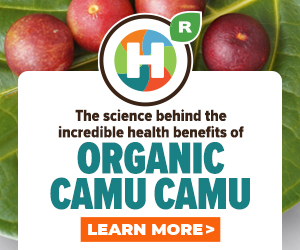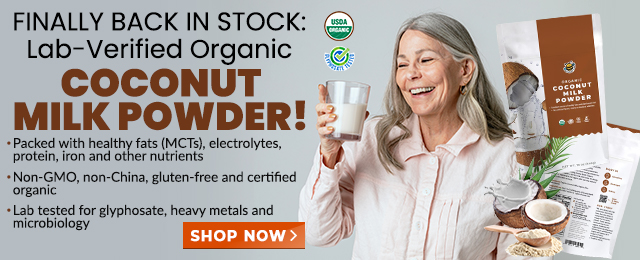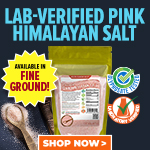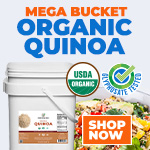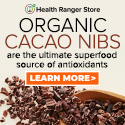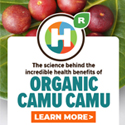
An inside look at spirulina production: an exclusive interview with Dr. Gerry Cysewski, CEO of Cyanotech Corporation
 Monday, October 25, 2004 Monday, October 25, 2004by Mike Adams, the Health Ranger Editor of NaturalNews.com (See all articles...) Tags: Cyanotech, spirulina, microalgae |
- TAKE IT DOWN Act advances in Congress amid free speech concerns
- Analysis: The coming economic collapse, a mass uprising and Trump's three secret weapons to halt the growing revolt
- Widespread social and economic unrest: Steve Quayle issues urgent financial warning of imminent asset collapse in new interview with Mike Adams
- Fauci is back in the limelight, and he’s busy promoting a future COVID or FLU pandemic
- Israeli lobbyists boast of controlling US national security policy in leaked AIPAC audio
- Tulsi Gabbard leads charge against the Biden regime’s global censorship of the 'Disinformation Dozen'
- Mike Adams releases country western hit single: Goin’ Back in Time is Comin’ Home
- Kiss Your Genetic Privacy Good-Bye! 23andMe Gets Green Light to Sell Your Intimate Genetic Details to Anyone They Want
- Aerosolized bioweapons? Strange “diploid biomasses” falling out of the sky in Florida captured under the microscope
- U.S. lawmakers investigate Meta over alleged China collaboration
- CLOT SHOT PLANDEMIC UNFOLDING: Fibrous, rubbery clots caused by covid injections have prion-like seeding activity
- Hospital staffers sound alarm after 10 nurses were diagnosed with BRAIN TUMORS
- Children’s Health Defense stands firm: Based on SCIENCE and personal experiences, the MMR vaccine is NEITHER SAFE nor EFFECTIVE
- Defunding DEADLY mRNA jabs: Government funding for mRNA technology being scrutinized and sidelined until proven "safe and effective" for real
- DEATH by VACCINE or face PRISON time: Canadian Freedom Convoy leaders CONVICTED for protesting forced vaccination during the Covid Plandemic
- Pfizer's RSV vaccine linked to preterm births as drug giant CONCEALED RISKS from pregnant women in unethical clinical trials
- Sen. Ron Johnson accuses CDC official in charge of COVID-19 injections of deleting records amid Congressional GOP scrutiny
- Shedding light on the dark side of MMR vaccines: How vaccinated individuals SPREAD MEASLES & put the vulnerable at risk
- Fauci is back in the limelight, and he’s busy promoting a future COVID or FLU pandemic
- Tulsi Gabbard leads charge against the Biden regime’s global censorship of the 'Disinformation Dozen'
- Aerosolized bioweapons? Strange “diploid biomasses” falling out of the sky in Florida captured under the microscope
- Analysis: The coming economic collapse, a mass uprising and Trump's three secret weapons to halt the growing revolt
- Kiss Your Genetic Privacy Good-Bye! 23andMe Gets Green Light to Sell Your Intimate Genetic Details to Anyone They Want
- Widespread social and economic unrest: Steve Quayle issues urgent financial warning of imminent asset collapse in new interview with Mike Adams
- U.S. lawmakers investigate Meta over alleged China collaboration
- Mike Adams releases country western hit single: Goin’ Back in Time is Comin’ Home
- Chemtrails unveiled: How the CIA and Big Business are manipulating the weather for profit
- Curcumin’s ancient healing power supercharges muscle recovery, and its effects are compounded with anti-inflammatory foods and supplements
- Tulsi Gabbard takes aim at censorship: Justice for the ‘Disinformation Dozen’
- China’s counter-tariff strategies: A new chapter in the U.S.-China trade war
- CLOT SHOT PLANDEMIC UNFOLDING: Fibrous, rubbery clots caused by covid injections have prion-like seeding activity
- Israeli lobbyists boast of controlling US national security policy in leaked AIPAC audio
- European Court of Justice: Healthcare professionals who promoted or administered COVID-19 vaccines are CRIMINALLY LIABLE for any harm caused
- Defunding DEADLY mRNA jabs: Government funding for mRNA technology being scrutinized and sidelined until proven "safe and effective" for real
- DEATH by VACCINE or face PRISON time: Canadian Freedom Convoy leaders CONVICTED for protesting forced vaccination during the Covid Plandemic
- U.S. approves new Russian ambassador as diplomatic thaw continues
- Newly released JFK files reveal Pentagon's role in creating Lyme disease and covid in the same lab
- Analysis: The coming economic collapse, a mass uprising and Trump's three secret weapons to halt the growing revolt
- Mike Adams releases country western hit single: Goin’ Back in Time is Comin’ Home
- Aerosolized bioweapons? Strange “diploid biomasses” falling out of the sky in Florida captured under the microscope
- Kiss Your Genetic Privacy Good-Bye! 23andMe Gets Green Light to Sell Your Intimate Genetic Details to Anyone They Want
- European Court of Justice: Healthcare professionals who promoted or administered COVID-19 vaccines are CRIMINALLY LIABLE for any harm caused
- Federal employees whine over DOGE's new directive requiring them to do a 5-point summary of weekly accomplishments
- Dr. Mike Yeadon releases 15-minute testimony - WATCH - about genocidal intent of COVID “vaccines”
- The Health Ranger releases “Vaccine Zombie” song and music video, using AI-animated zombies for the music video
- U.S. approves new Russian ambassador as diplomatic thaw continues
- Government waste exposed: Hegseth supports Musk’s demand for accountability from federal workers
- Trump reverses course on Gaza plan, says “nobody is expelling Palestinians”
- Now you can HEAR chemistry: Health Ranger translates molecules into music in stunning video demonstration that will blow your mind (and your ears)
- 5 Simple steps to boost your brainpower: How to strengthen executive function in a distracted world
- EPA advisor admits the agency is funneling billions to climate groups ahead of Trump’s return to White House
- A lack of integrity in Academia: Harvard professor found GUILTY of fraudulent research to promote CRT theory
- Rep. Nancy Mace introduces bill to ban biological males from female facilities on federal property
- Survival 101: Effective EMF blocking techniques
- Red Cross issues warning to stop blood plasma donations from vaccinated people
- Scientists confirm: GENIUS brain function can be spontaneously unleashed in humans without any apparent cause
- EPA advisor admits the agency is funneling billions to climate groups ahead of Trump’s return to White House
- HYSSOP: What research reveals about the health benefits of this ancient holy herb
- Two containers with completed ballots fall out of truck in Florida
- Newly released JFK files reveal Pentagon's role in creating Lyme disease and covid in the same lab
- Global leaders unite to clamp down on “misinformation” with UN-backed Cascais Declaration
- BREAKING: 2025 NDAA authorizes mandatory military draft of WOMEN across America… as Pentagon pursues global NUCLEAR war with both Russia and China at the same time
- Michael Yon warns of a ZIONIST TAKEOVER in Trump’s second administration
- Mike Adams releases country western hit single: Goin’ Back in Time is Comin’ Home
- Ozempic and Wegovy weight loss drugs are injectable LIZARD VENOM PEPTIDES that may unleash a devastating wave of organ failure… side effects align with symptoms of SNAKE BITES
- The Health Ranger releases “Vaccine Zombie” song and music video, using AI-animated zombies for the music video
- BOMBSHELL: DNA testing kits are a SCAM to develop ethnic-specific bioweapons
- Israeli soldiers accused of even more torture and abuse in the West Bank
- These 13 countries just signed an agreement to engineer a global FAMINE by destroying food supply
- NASA admits that climate change occurs because of changes in Earth’s solar orbit, and NOT because of SUVs and fossil fuels
- RFK Jr. clears key hurdle: Sen. Susan Collins backs controversial HHS nominee, signaling a new era for health policy
- Sermon 30: How Jesus reveals Caesar’s FAKE CURRENCY and FALSE AUTHORITY
Gerry: Okay, well first of all, I'd like to point out that Cyanotech, the name comes from cyanobacteria or blue-green algae, and Cyanotech is a microalgae company -- all of our technology and products are based on microalgae. We think microalgae holds tremendous potential for human health and nutrition. There are over 30,000 different species of microalgae, and they produce everything from fuels to very nutritious foods, sometimes even pharmaceuticals. And that's why we're in this area -- we think that microalgae is really an unexploited, vast potential natural resource.
Mike: When you say 30,000 varieties, of course your facility only deals with a few specific strains, correct?
Gerry: That's correct. We're only producing 2 strains commercially at this time.
Mike: And are there specific scientific names in common use, or is it just called spirulina?
Gerry: No, actually the scientific name of what we're producing is spirulina pacifica, and actually there have been some changes in the nomenclature and it's now scientifically known as athrospira platensis.
Mike: Your facilities are located in Hawaii, on the big island, and just curious, could you share with people why that is such an ideal place to harvest spirulina?
Gerry: Yes, as you mentioned, we're located on the Kona coast of the big island of Hawaii. First of all, it's an absolutely pristine environment -- there are no agricultural operations close by, so we don't have to worry about contamination with agricultural chemicals. And it's really the best place in the world to grow microalgae -- we have a very warm, mild climate throughout the year so we can produce throughout the year. We get more sunlight than any other coastal location in the United States, and sunlight is absolutely essential for the growth of microalgae. We get very low rainfall, so it doesn't affect our pond nutrients to any great extent, and also we have access to a very unique resource, which is cold deep seawater pumped up from a depth of 2,000 feet, and we use this cold deep seawater as a source of some 96 trace elements in our spirulina cultures. In addition, we use the coldness of the seawater to run a unique patented drying system called Ocean Chill drying, which allows us to dry our microalgae products in a low-oxygen environment and preserve all the essential nutrients.
Mike: That's a very important difference, I think, for people to understand, because spirulina is produced through a variety of different processes by a variety of manufacturers throughout the world, correct?
Gerry: Yes, it is. We actually are one of the very few places that can culture year-round, and we've maintained our spirulina cultures since 1984, going through many, many thousands of generations. And while spirulina has grown here on the Kona coast, it's actually adapted larger in size, it has acquired higher levels of carotenoids like beta carotene to protect itself against the intense sunlight here, and we call our brand of spirulina "spirulina pacifica." And as mentioned, we use some very unique drying processes to preserve the high levels of nutrients which are produced in the culture pond.
Mike: What happens if someone uses a more harsh drying process, say some other processor in the world that doesn't use Ocean Chill drying, what happens to the spirulina?
Gerry: Well, we've shown tests we have run without our Ocean Chill drying and with our Ocean Chill drying, and without Ocean Chill drying you can lose as much as 50% to 60% of the carotenoid content, like beta carotene and zeaxanthin, whereas if you use Ocean Chill drying you only lose between 5% and 10%.
Mike: So ounce per ounce, when they purchase Ocean Chill dried spirulina, they're getting 45%-50% more of the beta carotene and other carotenoids.
Gerry: That's absolutely right. And the Ocean Chill dried spirulina would be spirulina pacifica or anything that says Hawaiian spirulina. We're the only producers of spirulina in Hawaii.
Mike: That's an interesting note. So people can look for that on nutritional supplements that might be available through traditional channels. They can see Hawaiian spirulina, is that correct?
Gerry: That's absolutely correct, yes.
Mike: And that's always your spirulina then?
Gerry: Yes.
Mike: I'm also curious, what kind of facility do you have there? How large is it? How is this physically accomplished, this harvesting?
Gerry: Okay, we're located, as I mentioned, on the Kona coast. We're actually only a quarter mile away from the ocean, and we're located in a park, an aquaculture park called the Natural Energy Laboratory of Hawaii. We have 90 acres in this aquaculture park. We're situated on a lava field, actually, so there's no real vegetation around it. We have leveled this 90 acres of lava, and we have 69 large culture ponds. And each one of these culture ponds is 600 feet long, 50 feet across, and holds about 140,000 gallons of culture medium. And the proper nutrients are put into the culture pond, inoculated with spirulina, and they are gently stirred with large paddle wheels. And the reason for this paddle wheel agitation is that the spirulina grows to such a density that light only penetrates about one inch, so we need this constant motion so the bottom of the culture moves to the top and receives sunlight and growth. We actually harvest each one of our spirulina culture ponds every 7 days, so it's an extremely productive agricultural system.
Mike: That's an interesting point there, but I'd like to mention to listeners and readers, if you'd like to see a photo of this, you have an aerial photograph on your website showing those culture ponds, and that URL is http://www.cyanotech.com. It's quite an interesting photo. In terms of agriculture, I'd like your comments on comparing this form of aquaculture versus growing plants on land in terms of efficiencies and how quickly the crops can be turned over and reharvested.
Gerry: Yes, it's quite remarkable in terms of the productivity. As I mentioned, we harvest each one of these culture ponds every 7 days, and based on protein production, we probably have the most productive agricultural system in the world. We produce 10 times more protein per acre than even soybeans.
Mike: Okay. And soybeans, of course, are known to produce 10 times more per acre than, say, beef or cattle.
Gerry: Oh yes, absolutely.
Mike: So you have 100 times the protein production of cattle ranching.
Gerry: Yes, oh yes, there's no comparison.
Mike: So this has some interesting implications in terms of addressing global malnutrition, potentially. If the funds could be made available, isn't spirulina the perfect food to treat malnutrition?
Gerry: Well, it certainly is. It's extremely digestible, all the nutrients are very bioavailable. Certainly there are some lacking -- I would not recommend anyone eat just spirulina. It's a little low in vitamin C, it doesn't have a lot of fiber, but in terms of proteins and carotenoids, it's unsurpassed as a food.
 This article is part of an exclusive interview with Dr. Gerry Cysewski, CEO and founder of Cyanotech Corporation http://www.cyanotech.com, located in Kona, Hawaii. Cyanotech's spirulina and astaxanthin products are available in retail stores (look for products made with "Hawaiian spirulina") or through Nutrex-Hawaii at http://www.nutrex-hawaii.com.
This article is part of an exclusive interview with Dr. Gerry Cysewski, CEO and founder of Cyanotech Corporation http://www.cyanotech.com, located in Kona, Hawaii. Cyanotech's spirulina and astaxanthin products are available in retail stores (look for products made with "Hawaiian spirulina") or through Nutrex-Hawaii at http://www.nutrex-hawaii.com.
The aerial photo on the left shows Cyanotech's farms. The dark green culture ponds contain spirulina, while the reddish ponds contain astaxanthin in various stages of growth. The dark land mass on the right is a lava field.
Editors note: Spirulina is one of the superfoods I consume on a daily basis. Due to my passion about superfoods nutrition, I traveled to Kona, Hawaii to conduct a series of interviews with Cyanotech personnel. To find all available articles on Cyanotech, just type "Cyanotech" in the search box below. New articles are being added regularly.
Cyanotech at FETCH.news
Get independent news alerts on natural cures, food lab tests, cannabis medicine, science, robotics, drones, privacy and more.
 About the author:Mike Adams (aka the "Health Ranger") is a best selling author (#1 best selling science book on Amazon.com) and a globally recognized scientific researcher in clean foods. He serves as the founding editor of NaturalNews.com and the lab science director of an internationally accredited (ISO 17025) analytical laboratory known as CWC Labs. There, he was awarded a Certificate of Excellence for achieving extremely high accuracy in the analysis of toxic elements in unknown water samples using ICP-MS instrumentation. Adams is also highly proficient in running liquid chromatography, ion chromatography and mass spectrometry time-of-flight analytical instrumentation.
About the author:Mike Adams (aka the "Health Ranger") is a best selling author (#1 best selling science book on Amazon.com) and a globally recognized scientific researcher in clean foods. He serves as the founding editor of NaturalNews.com and the lab science director of an internationally accredited (ISO 17025) analytical laboratory known as CWC Labs. There, he was awarded a Certificate of Excellence for achieving extremely high accuracy in the analysis of toxic elements in unknown water samples using ICP-MS instrumentation. Adams is also highly proficient in running liquid chromatography, ion chromatography and mass spectrometry time-of-flight analytical instrumentation.
Adams is a person of color whose ancestors include Africans and Native American Indians. He's also of Native American heritage, which he credits as inspiring his "Health Ranger" passion for protecting life and nature against the destruction caused by chemicals, heavy metals and other forms of pollution.
Adams is the founder and publisher of the open source science journal Natural Science Journal, the author of numerous peer-reviewed science papers published by the journal, and the author of the world's first book that published ICP-MS heavy metals analysis results for foods, dietary supplements, pet food, spices and fast food. The book is entitled Food Forensics and is published by BenBella Books.
In his laboratory research, Adams has made numerous food safety breakthroughs such as revealing rice protein products imported from Asia to be contaminated with toxic heavy metals like lead, cadmium and tungsten. Adams was the first food science researcher to document high levels of tungsten in superfoods. He also discovered over 11 ppm lead in imported mangosteen powder, and led an industry-wide voluntary agreement to limit heavy metals in rice protein products.
In addition to his lab work, Adams is also the (non-paid) executive director of the non-profit Consumer Wellness Center (CWC), an organization that redirects 100% of its donations receipts to grant programs that teach children and women how to grow their own food or vastly improve their nutrition. Through the non-profit CWC, Adams also launched Nutrition Rescue, a program that donates essential vitamins to people in need. Click here to see some of the CWC success stories.
With a background in science and software technology, Adams is the original founder of the email newsletter technology company known as Arial Software. Using his technical experience combined with his love for natural health, Adams developed and deployed the content management system currently driving NaturalNews.com. He also engineered the high-level statistical algorithms that power SCIENCE.naturalnews.com, a massive research resource featuring over 10 million scientific studies.
Adams is well known for his incredibly popular consumer activism video blowing the lid on fake blueberries used throughout the food supply. He has also exposed "strange fibers" found in Chicken McNuggets, fake academic credentials of so-called health "gurus," dangerous "detox" products imported as battery acid and sold for oral consumption, fake acai berry scams, the California raw milk raids, the vaccine research fraud revealed by industry whistleblowers and many other topics.
Adams has also helped defend the rights of home gardeners and protect the medical freedom rights of parents. Adams is widely recognized to have made a remarkable global impact on issues like GMOs, vaccines, nutrition therapies, human consciousness.
In addition to his activism, Adams is an accomplished musician who has released over a dozen popular songs covering a variety of activism topics.
Click here to read a more detailed bio on Mike Adams, the Health Ranger, at HealthRanger.com.
Take Action: Support Natural News by linking to this article from your website
Permalink to this article:
Embed article link: (copy HTML code below):
Reprinting this article:
Non-commercial use OK, cite NaturalNews.com with clickable link.
Follow Natural News on Facebook, Twitter, Google Plus, and Pinterest
Science News & Studies
Medicine News and Information
Food News & Studies
Health News & Studies
Herbs News & Information
Pollution News & Studies
Cancer News & Studies
Climate News & Studies
Survival News & Information
Gear News & Information
News covering technology, stocks, hackers, and more



"Big Tech and mainstream media are constantly trying to silence the independent voices that dare to bring you the truth about toxic food ingredients, dangerous medications and the failed, fraudulent science of the profit-driven medical establishment.
Email is one of the best ways to make sure you stay informed, without the censorship of the tech giants (Google, Apple, Facebook, Twitter, YouTube, etc.). Stay informed and you'll even likely learn information that may help save your own life."
–The Health Ranger, Mike Adams











